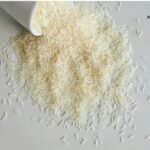Now Reading: Girl Scout Cookies Under Fire—How Much Should Consumers Worry?
- 01
Girl Scout Cookies Under Fire—How Much Should Consumers Worry?

Girl Scout Cookies Under Fire—How Much Should Consumers Worry?
Recent heavy metal findings in Girl Scout Cookies spur a heated debate. Uncover expert insights, risks, and tips to snack smart in this in-depth guide.
Table of Contents
For decades, Girl Scout Cookies have been a cherished treat for millions. But recent reports highlighting trace amounts of heavy metals in these cookies have ignited concern among consumers. Whether you’re a longtime fan or a curious skeptic, understanding these claims and their real-world implications is essential in making informed snacking choices.
The Emerging Concerns
Recent news has cast a spotlight on the presence of heavy metals—such as aluminum, arsenic, cadmium, lead, and mercury—in Girl Scout Cookies.
A study by Moms Across America, highlighted by several media outlets, reported that every cookie tested showed traces of these compounds.
However, critics point out that the study’s small sample size and methodology may not fully represent the safety of these treats.
Despite this, the headline-grabbing results have sparked a nationwide debate about food safety and transparency in our favorite snack brands.
Detailed Analysis and Expert Perspectives
Experts explain that while heavy metal contamination sounds alarming, the amounts detected in these cookies are typically below the thresholds that regulators like the FDA consider harmful in daily consumable items. Here are some key points to consider:
- Trace Amounts vs. Toxic Levels: Even when present, the trace levels found are often comparable to many other common food items. Experts suggest that a child, for instance, would need to consume several cookies in a day to approach the recommended limits for certain heavy metals.
- Comparative Metrics: It’s crucial to understand that food safety guidelines for liquids like water differ from those for solids. Absorption rates, cumulative exposure, and individual health factors all play a role in determining risk.
- Regulatory Insights: Agencies such as the FDA maintain strict standards for allowable levels of contaminants. They consistently review and update their guidelines to ensure consumer safety. In many cases, isolated studies like the one in question serve as a catalyst for further research rather than definitive evidence of immediate danger.
- Expert Opinions: Food scientists and regulatory experts stress that while vigilance is essential, the current evidence does not support an immediate health scare for moderate consumption. The situation underscores the broader need for transparency in food production and continuous testing to uphold high safety standards.
Emerging Trends in Food Safety
The current controversy is part of a larger movement for improved transparency and stricter testing protocols in the food industry. Consumers today are more informed and increasingly demand detailed insights into the origins and safety of what they eat. This trend is pushing companies to elevate their quality controls and communicate more openly about their processes, ensuring that products like Girl Scout Cookies meet both traditional expectations of taste and modern standards of health and safety.
What Should Consumers Do?
Navigating this complex issue can feel overwhelming, but here are some actionable tips for concerned snackers:
- Stay Informed: Regularly check reputable sources and official statements from food safety authorities. Understanding both the risks and the context behind these findings can help demystify the controversy.
- Practice Moderation: Enjoy your Girl Scout Cookies as part of a balanced diet. The trace amounts of heavy metals detected are unlikely to pose significant harm if consumption is occasional.
- Evaluate Alternatives: If you remain uneasy, consider exploring other brands or homemade treats with transparent sourcing and rigorous testing protocols.
- Discuss with Experts: For those with specific health concerns or conditions, consulting a healthcare professional can provide peace of mind and personalized advice.
Conclusion
The heavy metal debate surrounding Girl Scout Cookies is a multifaceted issue that highlights both the challenges and opportunities in modern food safety. While the findings have understandably cast a shadow over a beloved tradition, expert analyses suggest that moderate consumption remains unlikely to pose a significant risk.
Ultimately, this controversy serves as a reminder to stay informed, embrace transparency, and make thoughtful choices about what we eat. As the industry evolves, continued vigilance and open dialogue between consumers, experts, and companies will be key to ensuring our food remains both delicious and safe.











